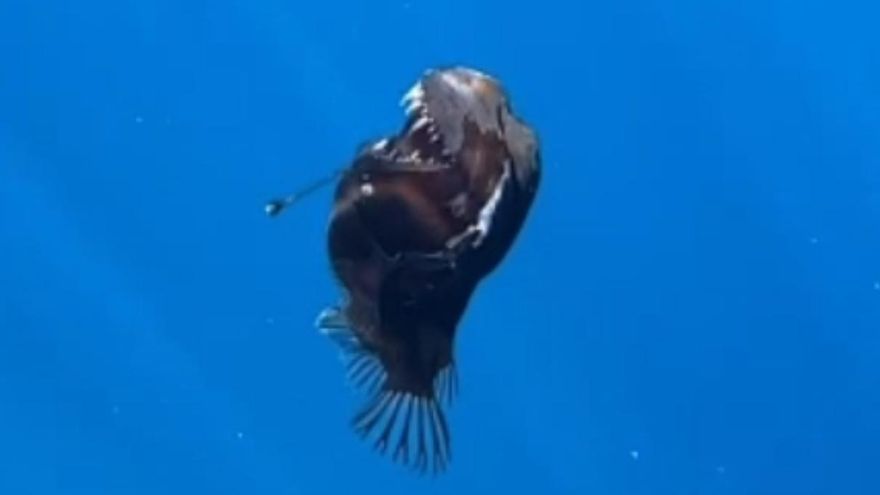
The NGO Condrk Tenerife, which focuses on the research and conservation of sharks and rays in the Canary Islands, has released footage of a remarkable sighting of a black devil or adult abyssal anglerfish during daylight hours, nearly at the surface Two kilometres from the coast of Tenerife—an exceedingly rare occurrence for this species.
This sighting took place on January 26 near Playa San Juan, within the municipality of Guia de Isora in Tenerife, and, thus far, according to Efe, the marine biologist The value, only larvae or deceased adult specimens have been observed.
“We spotted it as we returned to port. We passed beside it and I noticed something dark that did not appear to be plastic or any other debris; it looked odd. After we made the sighting, we spent several hours with it. It appeared to be injured and not in a healthy state, It only survived a few hours“, explained the researcher, who highlighted that the reasons for the fish being so close to the surface could be “countless.”
“We have no definitive explanation, but this is certainly not typical. It is a Very occasional and uncommon sighting. While we cannot declare that it never occurs, if such sightings were to happen on a more regular basis, we can assert that this could be the first documented instance of this kind,” he added.
After determining that the fish had died, the biologist stated that they treated it as a sample in a water container and transferred it to the Museum of Nature and Archeology (MUNA) in Santa Cruz de Tenerife.
“It could potentially be the First recorded sighting worldwide of a black devil or adult abyssal anglerfish (Melanocetus johnsonii), alive, in bright daylight and at the surface. This is a legendary fish that few will have had the chance to see alive,” noted the NGO Condrk Tenerife in an Instagram post.
The expedition from this organisation was engaged in a peeling research project when they encountered the abyssal monkfish.
“It is a true predator of the depths that resides on the seabed at depths between 200 and 2,000 metres, utilising its dorsal appendage, which is filled with bioluminescent symbiotic bacteria, as bait to lure its prey, similar to what is portrayed in the popular film ‘Finding Nemo,'” they added.
Regarding the possible reasons for the animal to be swimming in such shallow waters, the NGO suggests that it is “uncertain” and could be attributed to a disease, upwards currents, or possibly even the presence of a predator.
















